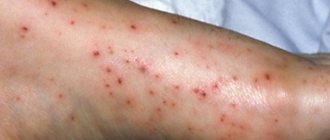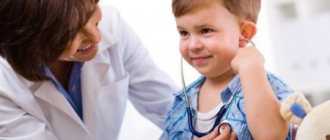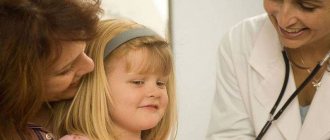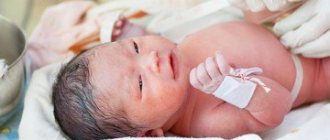In the good old days of Soviet medicine, the general medical attitude was good and was expressed something like this: “Do not give conclusions of narrow specialists and data from intermediate examinations to patients, do not show ready-made test forms, and refer them to the attending physician for clarification.”
However, in the era of insurance medicine, morals have softened, and any mother can easily find herself in the hands of an ECG film with a report handwritten by a functional diagnostician.
And the conclusions, it must be said, are different, for example - Sinus arrhythmia. Should the mother faint right away or should she first run to a paid cardiologist, having such an ECG of her child in her hands?
What it is
Based on the results of electrocardiography, a violation of sinus rhythm is diagnosed - sinus arrhythmia. But let us immediately note that most often this condition is associated with rapid growth and hormonal changes in the body and only occasionally indicates serious heart pathologies.
In any case, the baby should be examined by a doctor who, after conducting additional research, will determine the cause of the disease and choose the appropriate treatment tactics.
With sinus arrhythmia, the normal pulse rate in children (that is, the number of heart beats per minute) can be maintained. The duration of the intervals between heart contractions is disrupted, that is, the rhythm is disrupted.
Diagnosis of arrhythmia in children
The first signs of arrhythmia in children can be seen already during the initial examination; such an ordinary procedure as measuring the pulse already makes it possible to suspect an arrhythmia with a high degree of probability. The frequency, strength and uniformity of the pulse wave, as well as the ratio of the pulse on the left and right arm, can tell an experienced pediatric cardiologist a lot and that is why the examination begins with this study.
You can measure the pulse rate yourself, but at the same time, you should remember the following normal pulse rates in children of various age groups, namely: before the first year of life, 140 beats per minute, per year, heart rate (heart rate) reaches 120. At 5 years, heart rate already 100 beats per minute, by the age of 10 90, and in adolescents it gradually equals the indicators of a healthy person, that is, 60–80 heart beats per minute.
Auscultation of the heart is also a fairly simple procedure that can be performed at the first appointment. Auscultation is a procedure where a doctor uses a phonendoscope to listen for abnormalities in the heart. This is not so informative for directly diagnosing childhood arrhythmia, but on the other hand, it allows us to identify other disorders in the heart, which in turn can lead to arrhythmia. For example, pathological heart murmurs with an atrial septal defect are heard during auscultation, and this pathology, in turn, can lead to arrhythmia.
An ECG, also known as an electrocardiogram, is a basic, standard and highly informative study that is performed if arrhythmia is suspected. An ECG is a diagnostic method that allows you to reliably determine both the exact type of arrhythmia and the degree of its severity.
You should not try to decipher the ECG recording yourself; only a cardiologist, and ideally a pediatric cardiologist, can give a competent decoding. Many nuances during independent decoding can lead to incorrect interpretation and, consequently, unnecessary doubts and anxiety.
Electrocardiographic examination of children with arrhythmia may additionally include:
- ECG recording in the supine position;
- ECG in a standing position;
- ECG after exercise.
Certain types of ECG diagnostics are, for example, daily ECG recording or Holter monitoring (Holter ECG) - it allows you to identify rare, episodic disorders of the heart, as well as connect them with other processes occurring in the body.
Also standing apart are the so-called “stress ECG tests,” for example, bicycle ergometry, treadmill test, as well as pharmacological tests, for example, using atropine. In these studies, an additional, strictly controlled load on the heart is created, during which the actual electrocardiogram is taken from the patient. Such tests make it possible to determine even hidden disturbances in the functioning of the heart, which appear only under heavy load, but nevertheless occur and cause difficulties for the child, for example, during sports.
To establish concomitant organic damage to the heart, I use echocardiography (ultrasound of the heart). This research method allows us to identify possible damage to the cardiac muscle or heart valves, as well as evaluate the pumping function of the heart.
Additionally, when diagnosing arrhythmia, a pediatric cardiologist may seek advice from an endocrinologist and neurologist - this is standard practice.
General description of the disease
The heart is a pump for pumping blood. Ripple occurs due to electrical impulses that travel along muscle fibers, causing them to contract. This is done automatically. If for some reason the impulse is formed with a delay or advance, a malfunction occurs in the heart rhythm.
Based on heart rate, there are three types of arrhythmias:
- While maintaining the normal number of beats per minute.
- With an increase in the number of contractions - tachyarrhythmia.
- With a decrease in heart rate - bradyarrhythmia.
Sinus arrhythmia occurs as a result of changes in the conductivity of cardiac fibers, increased or decreased excitability, and failure of the automaticity of heart contractions.
By origin, the disease can be congenital, acquired or hereditary .
There are two degrees of severity:
- Moderate sinus arrhythmia in a child. Characteristic of non-dangerous forms of arrhythmia. Mild or absent symptoms. It is usually detected accidentally during routine ECGs.
- Severe sinus arrhythmia in a child. Has obvious symptoms. Accompanies diseases of the heart and blood vessels.
Classification of arrhythmia in children
Most often, arrhythmia is distinguished by the type of violation of one or another myocardial function, such as a violation of the automaticity or excitability of the heart muscle, problems in the conduction system of the heart, or a combination of these disorders.
Let's take a closer look at each of these groups:
Violation of the automaticity of the heart muscle includes the following nosologies: sinus arrhythmia, infantile sinus bradycardia or tachycardia. This also includes slow slipping rhythms, as well as pacemaker migration.
Sinus tachycardia in children and bradycardia
A type of arrhythmia in which an increase (tachycardia) or decrease (bradycardia) in the heart rate occurs by no more than 30 beats per minute from the child’s age norm.
Sinus arrhythmia
Arrhythmia is characteristic of children of any age, but occurs mainly in schoolchildren and occurs mainly as a respiratory arrhythmia. Characteristic of this type of arrhythmia is the different duration of cardiac complexes on the ECG, as well as a decrease in respiratory arrhythmia during exercise.
Rhythm Source Migration
Arrhythmia, which occurs due to the fact that the main “pacemaker” during arrhythmia is not the sinus node, but another part of the conduction system of the heart. On the ECG, this type of arrhythmias is characterized by different configurations of the P wave in different leads.
Disorders of myocardial excitability include the following arrhythmias: extrasystole, non-paroxysmal and paroxysmal tachycardia. Violation of excitability can also include atrial fibrillation: flickering and fluttering of the atria or ventricles of the heart.
Extrasystole
It is characterized by the appearance of extrasystole, which is defined on the ECG as an extraordinary cardiac contraction. Based on the location of the occurrence of an extraordinary impulse to contract the heart muscle, they are divided into ventricular and atrial. Extrasystoles are asymptomatic; patients rarely feel isolated moments of discomfort in the heart area.
Paroxysmal tachycardia
Attacks of a sharp significant increase in heart rate, over 160 beats per minute. Symptomatically, the child feels restlessness, anxiety, pain and a “feeling of pressure” behind the sternum.
Atrial fibrillation
In medical jargon it sounds like “flicker” - a rather severe arrhythmia associated with a violation of the coordinated contraction of the heart chambers. Typically, atrial fibrillation occurs against the background of serious organic damage to the heart.
Disorders of conduction function in the heart include the phenomena of sinoatrial block, intraatrial and intraventricular block, as well as blockade of the atrioventricular node.
Conduction function disorders
The type of blockade is usually determined by ECG results. In most cases, the blockade is manifested by a violation of the correct contraction of the heart muscle due to problems with the spread of excitation throughout its parts. This significantly reduces exercise tolerance, so weakness and poor health during physical activity and in patients with blockades is quite common. On the ECG, blockade can be determined by both an increase in PQ intervals and loss of individual cardiac complexes; in cases of complete blockade, a complete mismatch of contractions of the atria and ventricles can be observed.
There is also a separate classification of arrhythmias according to the degree of their clinical significance:
- Arrhythmias of no clinical significance include rare arrhythmias that are asymptomatic and do not affect the normal growth and development of the child, such as rare single extrasystoles, sinus bradycardia or tachycardia.
- Clinically significant arrhythmias include rhythm disturbances of a persistent nature, with an obvious clinical picture and significantly and strongly affecting the patient’s well-being. For example, arrhythmias such as extrasystoles, which are recorded quite often, paroxysmal arrhythmias, as well as SVC syndrome, and like some other types of arrhythmias, are considered clinically significant.
Dangerous and non-hazardous forms
Depending on the cause, heart rhythm failure is classified as respiratory, functional or organic.
Respiratory
The respiratory form is considered the most harmless type of the disease . It is expressed in increased heart rate when inhaling and decreased when exhaling.
A common cause is the immaturity of the baby’s nervous system. Heart rhythm disturbances go away with age, but you need to see a doctor so as not to miss possible complications.
Pathological causes of respiratory sinus arrhythmia include:
- increased intracranial pressure;
- brain damage of a non-inflammatory nature in infants, which is caused by oxygen starvation of the fetus during intrauterine development;
- immaturity of the child’s body as a result of premature birth;
- metabolic disorders in the body, rickets.
Functional
The functional form is less common than the respiratory form, but is also rarely dangerous . The cause may be disturbances in the functioning of the nervous, immune, and endocrine systems. It occurs as a consequence of an infectious or viral disease or as a manifestation of thyroid disease.
After eliminating the cause, the arrhythmia goes away.
Organic
The organic form is the most dangerous . Indicates pathological malfunctions in the impulse conducting system and other disturbances in the functioning of the heart.
This form is characterized by pronounced symptoms of arrhythmia.
The condition requires immediate examination and long-term treatment.
Causes of arrhythmia in children
Why does arrhythmia develop? There are many reasons leading to the development of arrhythmia in children, but for a better understanding they can be divided into three main groups.
- Cardiac or cardiac causes . These are mainly congenital malformations of the heart, for example, an atrial septal defect or a patent atrioventricular canal; such lesions primarily lead to hemodynamic disturbances and have their own typical clinical picture. On the other hand, this may be the result of severe infections, autoimmune or other inflammatory processes that directly affect the conduction system of the heart.
- Extracardiac or extracardiac . Congenital causes in this case include prematurity or malnutrition of the fetus, which does not allow the cardiac nervous system to fully develop. In this case, acquired arrhythmias include arrhythmias that arise against the background of hormonal imbalance in the body, emotional stress or other diseases of the nervous system, such as vegetative-vascular dystonia.
- Combined . In this case, we are usually talking about those cases when the reasons from both points above are simultaneously present. Often such arrhythmias are more difficult to diagnose and require more competent medical tactics.
As for sinus arrhythmia in children, which our pediatricians very often diagnose, in most cases it is functional in nature. In this case, the arrhythmia is adaptive in nature, adapting the child’s body to the conditions of increased physical or emotional stress.
Causes and risk factors
Arrhythmia is caused by cardiac dysfunction:
- Malfunctions in the system that conducts impulses. Violations may relate to the rate of formation and conduction of the impulse.
- Irregular structure of the heart. If abnormalities interfere with normal contraction of the heart muscle.
- Disorders of the autonomic nervous system.
Also, an abnormal heart rhythm may be one of the manifestations of the disease:
- congenital or acquired heart disease;
- inflammatory heart diseases;
- severe intoxication of the body (including drugs);
- neoplasms (benign or malignant tumors);
- severe cases of infectious or viral diseases;
- nervous tension and stress;
- disruptions during embryonic development;
- hereditary diseases;
- dehydration of the body;
- excessive physical activity, especially against the background of vitamin deficiency or general weakness.
Temporary disruptions in heart rhythm cause hormonal surges as a result of strong emotions.
In childhood and adolescence, there are several periods when the risk of arrhythmia is increased due to physiological characteristics:
- Infants from 4 to 8 months;
- preschool children from 4 to 5 years old;
- junior schoolchildren from 6 to 8 years old;
- teenagers from 12 years old.
During these periods, it is better to conduct an ECG (electrocardiography) and visit a cardiologist. You can read about deciphering ECG in children in a separate article.
Forecast and prevention of arrhythmia in children
The prognosis of childhood arrhythmia directly depends on the nature and extent of the disease, and if the prognosis for functional arrhythmias is favorable, then serious, combined arrhythmias, AB blockade of the third degree, as well as arrhythmias against the background of organic heart damage have an unfavorable prognosis. The prognosis is less favorable the later treatment is started; in the compensation stage, modern medicine has a chance to cope with even the most serious pathology.
Therefore, you should never give up; medicine has come very far in matters of cardiology. The use of pacemakers, artificial valves, or even replacing a diseased heart with an artificial or healthy donor heart can cope with even the most serious illness. And here the main thing is to catch it in a timely manner, suspect pathology and begin full treatment without delay.
Therefore, the most important aspects of preventing heart disease are, first of all, timely medical examination, as well as treatment of any chronic diseases affecting the functioning of the heart, such as rheumatism or thyroid disease.
In this case, the following recommendations will be useful:
- Diet and weight control. The child's nutrition should be balanced in quantity and quality; overeating, large meals before bedtime, as well as large amounts of sweets and fatty foods should be avoided. But foods rich in magnesium and potassium, such as dried fruits, nuts, fresh vegetables, such as zucchini or pumpkin, should always be present in the diet.
- Physical exercise. The child's physical activity should be sufficient. You should be wary of extreme stress in children's and youth sports, and also avoid physical inactivity and a sedentary lifestyle of the child.
- Control of emotional state. Children are very susceptible to stress and react heavily to it; if they are overly excitable, it is worth taking sedatives, such as infusions of valerian or motherwort, and it is also worth helping the child solve his psychological problems. If you are unable to cope with your child’s emotional problems on your own, you should immediately contact a child psychologist.
- Compliance with the regime. A child needs at least 8 hours of sleep a day; ideally, bedtime should be at 9–10 pm so that the child can get a good night’s sleep before the upcoming study.
- Glucose and cholesterol control. In children prone to obesity or with diabetes, constant monitoring of these two indicators is extremely important.
Monitor your child's health and do not delay going to the doctor if you think your child is sick. Remember that timely contact with an accredited specialist is the key to successful treatment.
Main symptoms
In mild cases of arrhythmia there are no pronounced manifestations. The situation is complicated by the fact that young children cannot articulate what is bothering them . Rhythm disturbances are detected by a cardiologist during examination or during an ECG.
Symptoms that should alert parents:
- Repeated loss of consciousness.
- Poor sleep for a long time. The baby often wakes up crying.
- Shortness of breath occurs during any physical activity (crawling, walking, lifting, etc.).
- The child often cries for no apparent reason.
- Increased sweating.
- Decreased appetite or complete refusal to eat.
- Blueness of the nasolabial triangle, nail plates, feet against the background of general pallor of the skin.
- Behavioral disorder. Restlessness or lethargy.
Older children may complain of:
- feeling of weakness, lethargy, loss of strength;
- discomfort in the heart area (interruptions);
- sensations of compression in the heart area, chest pain;
- dizziness;
- cardiopalmus;
- deterioration after physical activity.
Dangerous failure modes
The organic form of arrhythmia is considered the most severe. It is characterized by prolonged paroxysms or a constant course. The sinus node continues to work, but due to a violation of the integrity of cardiomyocytes (heart cells) or failures in the conduction system, the heart rate (HR) jumps. The organic form develops under the influence of various diseases.
The incidence of dangerous forms of heart failure in children is 25-30% of the total. You can see the reasons for them in the list below:
- Hereditary predisposition is the main factor in the development of many pathologies. If mom or dad had diseases that provoked arrhythmia, then there is a possibility that they will appear in the child.
- Pathologies caused by infections, combined with acute intoxication, fever and dehydration, have a negative effect on the heart muscle. The electrolyte balance and composition of the interstitial fluid are disrupted, which causes failures in the conduction system.
- Vegetative-vascular dystonia is manifested by a dysfunction of the narrowing and dilation of blood vessels. The heart has to beat more often or more slowly, which leads to the development of arrhythmia and disruptions in hemodynamics (blood flow).
- Rheumatism affects the valve apparatus, which can cause inflammatory diseases. It has a chronic course and develops due to tonsillitis. The disease is accompanied by high fever, periodic joint pain and damage to the heart muscle.
- Inflammatory diseases of the myocardium (myocarditis, pericarditis, endocarditis), which are bacterial or viral in nature, provoke the occurrence of various arrhythmias. Often the sinus type of failure manifests itself, but sometimes more dangerous forms develop (atrial fibrillation, His bundle block). The main pathological process is accompanied by pain in the chest, high fever, swelling of the lower extremities, shortness of breath and liver dysfunction.
- Developmental defects often provoke the occurrence of a pronounced form of arrhythmia. They can only be eliminated surgically if it is not possible to stop the attacks with medications.
- Heart tumors are extremely rare, but can cause heart rate disturbances. It is treated exclusively by surgery.
Diagnostic measures
The very first method for diagnosing cardiac disorders is electrocardiography .
To obtain reliable ECG results, it is important to carry out the procedure correctly. If the little patient is uncomfortable, scared, or ran around before the test, then the cardiogram will show a disturbance in heart rhythm. But in this case, the arrhythmia is caused by natural disruptions in breathing due to nervousness.
Therefore, the child needs to be adjusted to the procedure and the most comfortable conditions created.
In addition, additional research methods are used:
- Echocardiogram. The study is carried out using ultrasound.
- 24-hour Holter ECG monitoring. Long-term continuous recording of a cardiogram over a day or more period of time.
- Stress test . Recording an ECG during exercise.
- Orthostatic test . Determination of certain indicators (pressure, pulse rate and others) when moving from a lying position to a standing position and vice versa.
- Electrophysiological study . A method in which parts of the heart are stimulated and the results are recorded. In this case, electrodes are inserted directly into the heart.
- Analyzes . A general blood test is performed in children and hormonal parameters are examined.
Most often, an ECG is performed with different load options. An example of what sinus arrhythmia looks like on an ECG in a child:
, differential diagnosis is used . This is a research method in which diseases that do not meet certain criteria are excluded until the only correct diagnosis is identified.
There are computer programs that, based on a number of data, can create a list of possible diseases of a patient. And the doctor has already made a diagnosis.
Symptoms of sinus arrhythmia
Older children experience the following symptoms:
- Subjective sensation of accelerated heartbeat,
- Breathing problems (shortness of breath),
- Malaise, fever,
- Loss of consciousness, fainting, dizziness,
- Intermittent pain in the area of the heart, squeezing or pressing in nature,
- Decreased physical activity.
- In some cases there are no symptoms,
- Cold sweat,
- Panic attacks.
- Acceleration of heart rate when inhaling and slowing down when exhaling.
Children in the first year of life may experience:
- Sleep disorder, insomnia,
- Pulsations of the carotid (carotid) arteries,
- Pallor of the skin,
- Poor appetite
- Tearfulness,
- Minor weight gain.
Dangerous accompanying symptoms:
Such dangerous accompanying symptoms as pain in the heart, shortness of breath, cyanosis, edema, fainting and others indicate that, in addition to sinus arrhythmia, the child may have other more dangerous concomitant diseases.
Therapy tactics
If the results of the cardiogram reveal a violation, you need to visit a cardiologist . Additional examinations will be prescribed to help determine the cause, form and severity of the pathology. Only after this is treatment prescribed.
, respiratory-type arrhythmias do not require treatment and go away on their own. But they require medical supervision.
Functional heart rhythm disturbances disappear after the cause of the disease is eliminated.
Organic arrhythmia requires long-term complex treatment, as it is caused by cardiac pathology. Treatment tactics are selected individually.
Treatment of any type of arrhythmia includes organizing the correct daily routine, a healthy varied diet (mainly plant and dairy foods), a gentle regimen, massages (especially neck massage).
You can’t feed your baby before bedtime; you need to avoid foods with caffeine, avoid obesity, and reduce your time at the computer.
The intensity of permissible physical activity is determined in each case individually. It is usually useful to do swimming, gymnastics, and hiking. Children with arrhythmia should not be nervous or overtired.
General treatment plan:
- Therapy is based on antiarrhythmic drugs that normalize heart rhythm and relieve unpleasant symptoms. For example, Aymalin, Anaprilin, Verapamil and others.
- Painkillers.
- Sedatives.
- Complexes of vitamins and minerals.
The medicine is selected by the doctor.
It is strictly forbidden to give heart medications to children without medical advice. In severe cases, the child should be under medical supervision. You may need surgery to install a pacemaker.
How does a heart rhythm disorder affect a child?
Sinus arrhythmia of the respiratory type is not capable of causing serious concern to the child. The maximum is a feeling of rapid heartbeat. The child’s complaints about the inability to breathe normally, fatigue, a general feeling of weakness and frequent dizziness should make parents wary: sinus arrhythmia cannot be accompanied by such symptoms.
This clinical picture is more typical of fairly serious heart diseases. You should talk to your cardiologist about these symptoms in your child. The same should be done in case of severe cyanosis of the nasolabial triangle, shortness of breath and repeated fainting.
First you need to count the number of heartbeats. This can be done by placing your hand on the baby's chest near the left nipple. If you can’t calculate it this way, calculate this indicator using your pulse. Wrap your hand around your wrist so that four fingers are on the inside of your wrist and your thumb is on the outside.
In addition to counting the number of heart contractions, you can also estimate the size of the intervals between beats. If the pauses between beats are different, then we can confidently talk about sinus tachycardia or bradycardia.
Prognosis and possible complications
In most cases, the arrhythmia goes away on its own, with no further consequences. In severe cases, heart failure may develop. The child is assigned a disability.
The most terrible complications are asystole (cessation of heart contractions) and fibrillation (a condition in which different parts of the heart fibers contract differently - fluttering). The result is death.
Learn more about heart rhythm disturbances in children, as well as the syndrome of which this may be a symptom, from the video:
Forecast
Non-dangerous forms of arrhythmia go away virtually without the participation of a doctor and do not provoke the development of complications. Organic types of failure often lead to heart failure, asystole, atrial fibrillation and other dangerous consequences. Because of them, the child may become disabled or die. The prognosis will depend on the severity of the underlying pathological process and the effectiveness of the course of therapy. In advanced cases, surgical intervention is used.
The sinus form of arrhythmia occurs in every second baby. It rarely leads to complications and is virtually invisible. In most cases, such a failure is detected using an ECG. If it was caused by pathologies of the heart or other organs, then the course of therapy will be aimed at eliminating them. The treatment regimen will include medications, physiotherapeutic procedures and lifestyle adjustments. If there is no result, surgical intervention will be used. Milder cases of arrhythmia can be eliminated by reducing physical activity, avoiding stress and proper diet.
Prevention
The best preventative measure is a healthy lifestyle . The baby should have a daily routine, sufficient sleep, a nutritious balanced diet, and the absence of stressful situations and excessive stress.
There is no need to miss routine examinations with doctors . At the slightest suspicion, contact a cardiologist. If there are diseases that can cause arrhythmia, or a hereditary predisposition, monitor the condition and see a doctor.
Sinus arrhythmia in children and adolescents is most often caused by hormonal changes and rapid growth. As you grow older, it goes away on its own. But constant medical supervision and a comprehensive examination are required.
To exclude cardiac pathologies or serious diseases, the symptom of which may be arrhythmia. Treatment tactics and prognosis depend on the type of heart rhythm disorder and the reasons that caused the failure.
Treatment
Arrhythmia in children is treated with conservative methods, medications and normalization of the child’s quality of life.
Drug treatment is aimed at eliminating the underlying disease that caused the arrhythmia, since there are no drugs for the specific treatment of arrhythmia. Medicines should be selected by a cardiologist after a complete (24-hour) study of the heart rhythm.
Most often prescribed:
- Nootropic drugs to improve blood circulation (Phesam, Piracetam, Cinnarizine);
- Potassium, magnesium, calcium preparations (Asparkam, Magnelis, Kalcemin);
- Sedatives to calm the nervous system (motherwort, Glycine, valerian, Phenibut);
- Homeopathic remedies (tinctures of ginseng or eleutherococcus).
What diseases negatively affect the sinus node?
There is such a concept in medicine as sick sinus syndrome, or SSS. With such a violation, this structure malfunctions, which leads to severe disorders. A sinusoidal heart rhythm is considered normal in the results of ECG interpretation. When changes have occurred in this zone, the rate of beating of the organ will no longer be the same.
The sinus node is located between the right atrium and the vena cava, and serves as a rhythm regulator. In this part of the organ there are nerve fibers through which signals are transmitted to increase heart contractions or decrease them, if such a need arises. The natural process of increasing the rate of beating of an organ can cause emotional and physical stress, as well as other non-pathological factors.
By maintaining a constantly normal heart rate, the sinus node ensures proper contraction of all chambers of the organ, fully overcoming vascular resistance, as well as good blood circulation. This function operates under the influence of a cluster of cells of the rhythmogenic type; they can produce a nerve signal, and then help it move further along the area of the conduction system.
Normal automaticity and sufficient conductivity of impulses can guarantee good filling of the arteries of the brain and heart with blood, preventing the development of ischemia. Weakness of the sinus node causes this entire process to fail, and the rhythm of the organ changes.
Reasons for violations:
- Heart diseases, which include hypertrophy, arterial hypertension, ischemic lesions of any severity, inflammatory processes in the organ, myocardiopathy, injuries and defects of an acquired and congenital nature, operations.
- Systemic diseases characterized by degenerative disorders in tissues when muscle tissue is replaced with scar tissue. Such ailments include SLE or systemic lupus erythematosus, amyloidosis, scleroderma, and inflammation of idiopathic origin.
- Pathologies of the endocrine system - an increase or decrease in the synthesis of hormones. Thyrotoxicosis or hyperthyroidism is most often the cause of sinus node weakness.
- Neoplasms in the heart and nearby areas with a malignant course.
- An inflammatory process of a specific nature that accompanies the tertiary period of human infection with syphilis.
In addition, there are secondary causes of disorders in the sinus node. Such conditions are not directly related to heart pathologies; they are inorganic in relation to this organ.
Secondary factors:
- Hypercalcemia.
- Side effects of certain medications (Clonidine, Dopegit, beta-blockers, cardiac glycosides and others).
- Hyperkalemia.
- Some diseases of the genitourinary system, digestive tract, hypothermia or high pressure inside the skull, which is accompanied by hyperactivity of the vagus nerve.
Signs of illness
The clinical picture of the disease may vary. To suspect that you have such a disease, you need to know its main signs. The paroxysmal course of the pathology is characterized by an abrupt onset of manifestation; an attack can occur at any moment and last from a few seconds to many hours, and then end suddenly. The chronic type of the disease has a different character. The heart beats faster all the time.
The condition of such a patient may periodically worsen or improve.
Signs:
- difficulty breathing, shortness of breath;
- general weakness of the body that occurs suddenly;
- a strong heartbeat that a person feels, the fluttering of an organ in the chest;
- swelling of the lung tissue;
- attacks of suffocation;
- dizziness;
- arrhythmic type shock;
- trembling of the limbs or the whole body;
- false urge to urinate.
If adequate treatment is not available, the disease can cause complications in the form of other dangerous ailments, even when the rate of tachyarrhythmia is moderate. Often such consequences are: stagnant blood processes, cardiac asthma, severe swelling of the lung tissue, coma, organ failure and death.
Features of the disease in newborns
Arrhythmias are most often diagnosed in premature newborns.
The violation can occur in several ways:
- bradycardia - heartbeats occur less than 100 times per minute. The causes are usually problems with intrauterine development. A mother may suspect a disorder based on the baby’s insufficient sucking, pale skin, and poor sleep.
- Tachycardia - the number of contractions exceeds 200 beats per minute.
Despite the fact that some types of arrhythmias may be physiological or harmless, the complete absence of such disorders in a child is considered the norm. In the maternity hospital, all newborns usually undergo an ultrasound and cardiogram, which allows existing pathologies to be identified in a timely manner.
It is also important to understand that the number and rhythm of a child’s heartbeat is influenced by his psycho-emotional state. Increased speed can be caused by physical activity, crying, irritability during illness, and slowdown can be caused by sleep, calmness
The conduction system of the heart in children is imperfect, therefore, in the absence of organic disorders, the problem is likely to disappear in adulthood.











